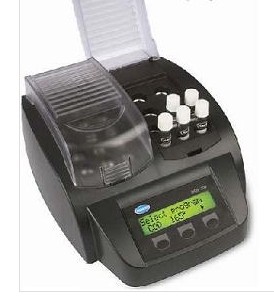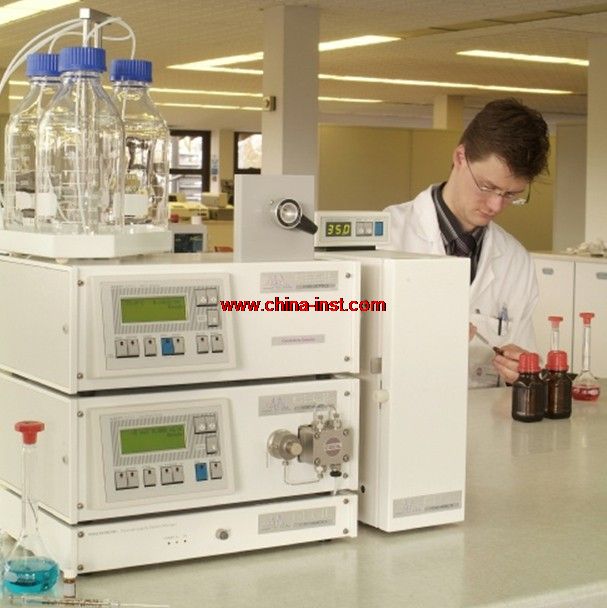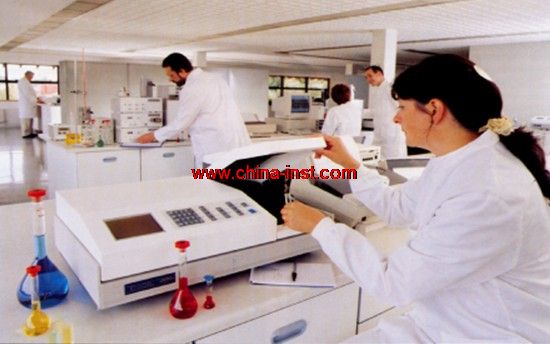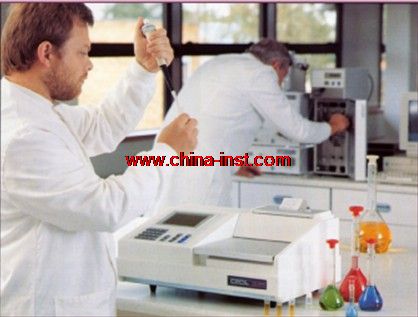The fully symmetrical optical system measures sample and reference simultaneously for ultimate accuracy, precision and baseline flatness. Long term stability is at least ten times better than single beam systems. Coated optics for long life.
Variable Optical Bandwidth
The CE 9500 offers variable optical bandwidth from 0.5mm to 4mm. This range covers all the more exacting applications where either high optical resolution or maximum energy throughput is required.
Method Operation and Storage
Up to 100 sets of instrument parameters, including concentration curves may be stored, security code protected. When recalled, instrument parameters are automatically set, avoiding errors.
Alpha Numeric Entry and Assay Program
A full Alpha Numeric facility is provided for formula entry and documentation for GLP. Assay formula entry with Assay Program is rapid and calculations using many wavelengths may be made at high speed with fully documented results.
Software Enhancement By E-SEF
E-SEF - Encoded Software Enhancement Facility - allows software modules to be enabled using encoded numbers provided by telephone, fax or E-mail. Software requirements may be tailored, at any time, as required.
Data Storage and Protection
Data, including 100 spectra, concentration curves , kinetics and time course plots may be stored in safe memory, security code protected against tamper or deletion using a four digit password.
Reprocessing
Scans, time course plots, and reaction curves may all be reprocessed to any required format on the display screen and then plotted on the integral or an external printer.
Photomultiplier Detector
A high performance end window photomultiplier is used in all instruments for best possible accuracy and optimum performance in narrow bandwidth, or energy limited applications, eg turbid sample measurement.
Performance Validation
Software and certified standards enable wavelength accuracy, Absorbance accuracy, bandwidth etc. to be validated. A timed and dated report includes the serial number of the instrument.
Powerful Quantification
Many quantitative methods are available including band area computation with background correction, differencing and stripping of spectra, wine and colour assays, mathematical calculations between several wavelengths, protein and DNA assays.
Assay Program
Assay formulae requiring measurements at up to 10 wavelengths may be entered rapidly. Programming for computation is automatic at entry without user intervention. Automatic sequences may be set for multi-sample assays and may be stored as methods.
Curve and Line Fitting
A straight line, quadratic or cubic concentration curve may be fitted to up to 30 standards, with or without an intercept at the origin. Standards may be deleted and replaced and a new curve fitted.
Reaction Kinetics
Single cell kinetic measurements are possible with plots and data displayed on screen. Data may be reprocessed, regression analysis applied and curves stored, security code protected against tamper or deletion.
Multi-Cell Reaction Kinetics
Up to four or six cells are automatically measured with all reaction curves displayed on screen. Each curve may be selected for processing with the results of regression analysis printed.
Multi Wavelength and Bio Assays
Assays are provided using either two or three wavelengths. A wine colour assay is provided. Assays for Warburg and Christian, Lowry, Bradford, Biuret and BCA methods are also available.
Band Area and Height Computation
Band areas with correction for sloping background absorption are readily quantified, with all details and construction displayed. Band areas may also be computed for derivative spectra to facilitate difficult quantification.
Cell Program
Using the various cell changers, measurements may be made on up to 4, 6 or 8 cells at a single wavelength with cycle time and number of cycles entered by the operator. A cell and wavelength program may be combined.
Wavelength Program
Measurements may be programmed for 10 different operator selected wavelengths with the cycle time and number of cycles selected by the operator. A wavelength and cell program may be combined.
Scanning
Double Beam Wavelength Scans
Scans at up to 4000nm/min are presented on screen or printed with all peaks annotated with wavelength and Absorbance. Tables are also presented listing all peaks and troughs with values.
Display Scrolling
Use of the display scrolling facility enhances the effective screen size and enables spectra and data up to 550mm wide, 6 screen widths, to be viewed. The last eight scans are automatically retained for recall by entering their scan sequence number and may be reprocessed, overlayed or transferred to protected memory for future recall.
Overlayed Spectral Scans
Up to six scans, including stored scans, may be overlayed, with or without offsets for convenient comparisons or further manipulation.
Difference Spectra
New wavelength scans or scans from store may be presented on screen and the difference spectra produced. The scans may be normalised enabling spectral stripping to reveal impurities or additives.
Derivative Spectra
Derivative spectra, up to sixth are readily produced, with selectable smoothing, either alone or superimposed on the fundamental, with or without an offset. Scaling is automatic with all peaks and troughs quantified.
Scan Storage
Up to 100 spectra may be stored in 10 safe memory banks for future recall. Each spectrum is automatically allocated a recall number, when stored, and may be security code protected against tamper or deletion.
Programmed Scans
Automatic scans, single or repeat may be made of a cell program of up to 4, 6 or 8 cells. A programmed sequence of scans may also be made of a single sample.
Time Course Plots
Changing samples or flows may be examined and displayed by making a time course plot. Data may be reprocessed and stored, security code protected, with an automatically assigned recall number.
Sampling
Cells and Flowcells
As well as 10mm cells and flowcells, holders are available for rectangular and cylindrical cells up to 100mm pathlength. A microsampling system measures to 50µl or below. Third party nano cells may also be used.
Turbid Sample Measurements
A turbid sample optical system enables the measurement of heavily scattering samples, which would otherwise be difficult or impossible to measure. 10mm cells, films or solid samples may be measured.
Automatic Cell Changers
Automatic changers are available for 4, 6 or 8 cells, providing rapid sample changing or the facility for full programming.
Sipette Sampling
Samples down to 300 microlitres may be measured in a 10mm cell. Sampling is under control of the instrument's microprocessor system. Samples may be saved or pumped to waste.
Sample Temperature Control
Water and thermoelectric temperature control are available for single cells and automatic cell changers. Temperature is set from the control panel and displayed on the screen.
Batch Sampling
Automatic batch sampling for up to 100 samples is available. The pump fits within the sample compartment and volume etc is set from the control panel and displayed on screen. Batch number entry is provided.
Dissolution Testing
Versions of the instruments fitted with a special cell compartment with piping port, are available for dissolution testing using Cecil TD software and a PC. Six and eight cell changers are available.
Specular Reflectance
Special accessories enable specular reflectance measurements to be made. Both fixed angle and variable angle reflectance accessories are available. The latter is particularly useful for film thickness measurements.
Fluorescence and Gel Scanning
Using the fluorescence accessory quantitative assays are possible. When required the excitation wavelength may be scanned. A gel scanner enables 100mm gels and films to be measured.
================================================
双光束光学系统
完全对称的光学系统可以同时测量样品和参比的最终准确度,精密度和基线平直度。长期稳定性比单波束系统更好的至少10倍。镀膜光学,使用寿命长。
可变光带宽
该CE 9500提供了可变的光带宽从0.5mm到4毫米。这个范围涵盖了所有的更加严格的应用场合是必需的或高光学分辨率或最高能量的吞吐量。
方法操作和储存
高达100套的仪器参数,包括浓度曲线可以存储,安全代码的保护。当回忆说,仪器参数都自动设置,避免错误。
字母数字输入和分析程序
一个完整的字母数字设备提供了一种用于GLP公式输入和文档。试验配方条目与测定程序是快速和使用多个波长的计算可以由高速用完整的文档的结果。
软件增强通过E- SEF
E- SEF - 编码软件增强基金 - 允许使用通过电话,传真或电子邮件提供的编码数字被激活的软件模块。软件要求可定制的,在任何时候,根据需要。
数据存储和保护
数据,其中包括100光谱,浓度曲线,动力学和时间进程曲线可以存储在安全的存储,使用一个四位数的密码安全密码保护,防止篡改或删除。
后处理
扫描,时间过程图,并反应曲线可以全部进行再加工,以在显示屏幕上的任何所需的格式,然后绘制在积分或外部打印机。
光电倍增管检测器
高性能端窗光电倍增管是用在为最佳的精确度和最佳的性能在窄带宽,或能量受限的应用,如浑浊样品测量所有仪器。
性能验证
软件和认证标准,使波长准确度,吸光度精度,带宽等进行验证。一个定时及于报告包括仪器的序列号。
强大的定量
许多定量方法可供选择,包括带面积计算与背景校正,差分和光谱,酒和彩色分析,几个波长,蛋白质和DNA检测的数学计算的剥离。
试验计划
试验配方需要测量高达10个波长可以迅速进入。编程计算是自动的,无需用户干预项目。自动序列可用于多样品分析和设置可被存储为方法。
曲线和拟合线
直线,二次或三次浓度曲线可装配到高达30标准,使用或不使用截距在原点。标准可能会被删除并替换和新的曲线拟合。
反应动力学
单细胞动力学测量是可能的情节和画面上显示的数据。数据可能会被重新处理,回归分析应用和曲线存储,安全代码保护,防止篡改或删除。
多细胞反应动力学
多达四个或六个细胞与屏幕上显示的所有反应曲线自动测量。每条曲线可用于处理被选择与回归分析印刷的结果。
多波长及生物测定
使用两个或三个波长的光被提供的检测。提供一个葡萄酒的颜色检测。用于检测华宝和基督教,洛瑞,布拉德福德,缩二脲和BCA方法也可提供。
带面积和高度计算
与校正倾斜的背景吸收带区域容易量化,并显示所有的细节和建设。带区域也可以被计算为微分光谱,以便难以定量。
细胞程序
使用各种细胞变换器,测量可以由多达4或6或8个细胞在含有周期时间和由操作者输入的周期数的单一波长。的细胞和波长程序可被组合。
波长程序
测量可以被编程为10个不同的操作员所选择的波长的周期时间和由操作者选定的周期数。波长和细胞程序可被组合。
扫描
双光束波长扫描
扫描速度高达4000nm/min呈现在屏幕上或印有注释的波长和吸光度所有峰。表中还提出,列出所有的波峰和波谷与价值观。
滚动显示
使用显示滚动设施的提高有效屏幕尺寸,使光谱和数据高达550毫米宽, 6屏幕的宽度,来看待。八强扫描通过输入其扫描顺序号自动保留和召回可能被再加工,重叠或转移到受保护的内存以备将来调用。
重叠光谱扫描
多达六个的扫描,包括存储的扫描,也可以重叠,带或不带偏移量为便于比较,或进一步的操作。
差谱
从存储新的波长扫描或扫描可以被呈现在屏幕上,所产生的差示光谱。该扫描可以被归一化使得频谱剥露出的杂质或添加剂。
导数光谱
微分光谱,最多第六易于生产的,具有可选的平滑处理,无论是单独或叠加在基本的,带或不带偏移量。缩放是自动与量化所有的波峰和波谷。
扫描存储
高达100光谱可以存储在10安全存储银行以备将来调用。每个光谱是自动分配的召回数,存储时,也可以安全码保护,以防止篡改或删除。
编程扫描
自动扫描,单次或重复可以由一个单元程序的最多4个, 6个或8个细胞。扫描的编排顺序也可以由一个单一的样本。
时间课程地块
更换样品或流量可检测并显示通过做一个时间过程的情节。数据可能会重新处理和存储,安全代码保护自动分配的召回数量。
采样
细胞和测量管
以及10毫米细胞和测量管,支架可用于矩形和圆柱形电池可达100mm光程。一个微量进系统的措施, 50μL或以下。第三方纳米细胞也可使用。
浑浊的样品测量
混浊样品光学系统使大量散射样品,否则会难以或无法测量的测量。 10毫米细胞,膜或固体样品可以进行测量。
自动换电池
自动换可用于4,6或8个细胞,提供快速样品更换或设施进行全面编程。
Sipette采样
样品下降到300微升可以以10mm比色皿进行测定。抽样是根据仪器的微处理器系统的控制权。样品可以保存或抽浪费。
样品温度控制
水和热电温度控制可用于单个细胞和细胞自动换。温度从控制面板中设置和显示在屏幕上。
批量采样
自动批量采样多达100个样品是可用的。样品室中的泵适合,体积等从控制面板中设置并在屏幕上显示出来。提供批号条目。
溶出度测试
配有特殊的细胞室与配管口的工具版本,可使用塞西尔TD软件和PC溶出度测试。六到八个细胞兑换服务。
镜面反射
特殊配件使镜面反射率测量作出。两个固定角度和变角反射附件可供选择。后者是用于薄膜厚度测量时特别有用。
荧光和凝胶扫描
使用荧光附件的定量分析是可能的。当需要的激发波长可以被扫描。凝胶扫描仪能够百毫米凝胶和薄膜进行测量。














 MSN客服
MSN客服
